Cool Ice, Hot Discoveries: 70 Years of Human Wisdom Behind Ice Flow
Published in Earth & Environment and Materials

Imagine standing beside a glacier—an immense, frozen river that silently yet relentlessly moves toward the ocean. To the eye, it seems eternal and motionless, but beneath its tranquil surface lies a hidden world of dynamic forces. Understanding how ice flows isn’t just a curious scientific quest; it holds profound implications for predicting sea-level rise in our warming world. Greenland and Antarctica store enough ice to raise global sea levels by about 65 metres, and knowing how rapidly this rise might happen depends critically on understanding the physics of ice flow. Our recent research set out to unravel these mysteries, tapping into seventy years of accumulated human wisdom to dramatically refine our grasp of the properties of ice flow.
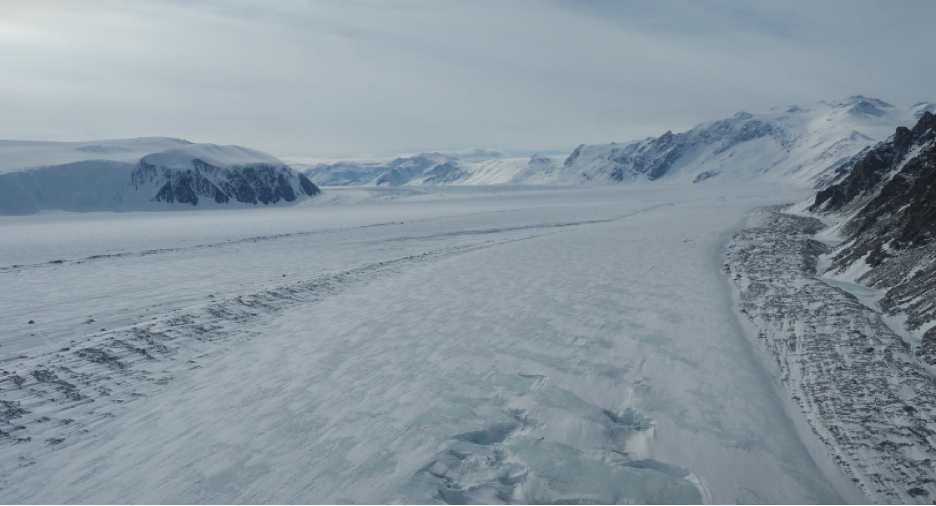
Figure 1. The shear margin of the Priestley Glacier, Antarctica, where ice flow creates striking deformation patterns. Photo by: David Prior.
A Fascination with Ice
My own fascination with ice began early in my scientific career. At a glance, ice is simple: frozen water, cold and clear. Yet, its behaviour at glacial length-scales is surprisingly intricate. It doesn’t merely sit still—it creeps, bends, and shifts continuously, influenced by temperature, stress, and even its own internal structure. Grasping precisely how and why this happens is essential for accurately forecasting how ice sheets might react to climate warming.
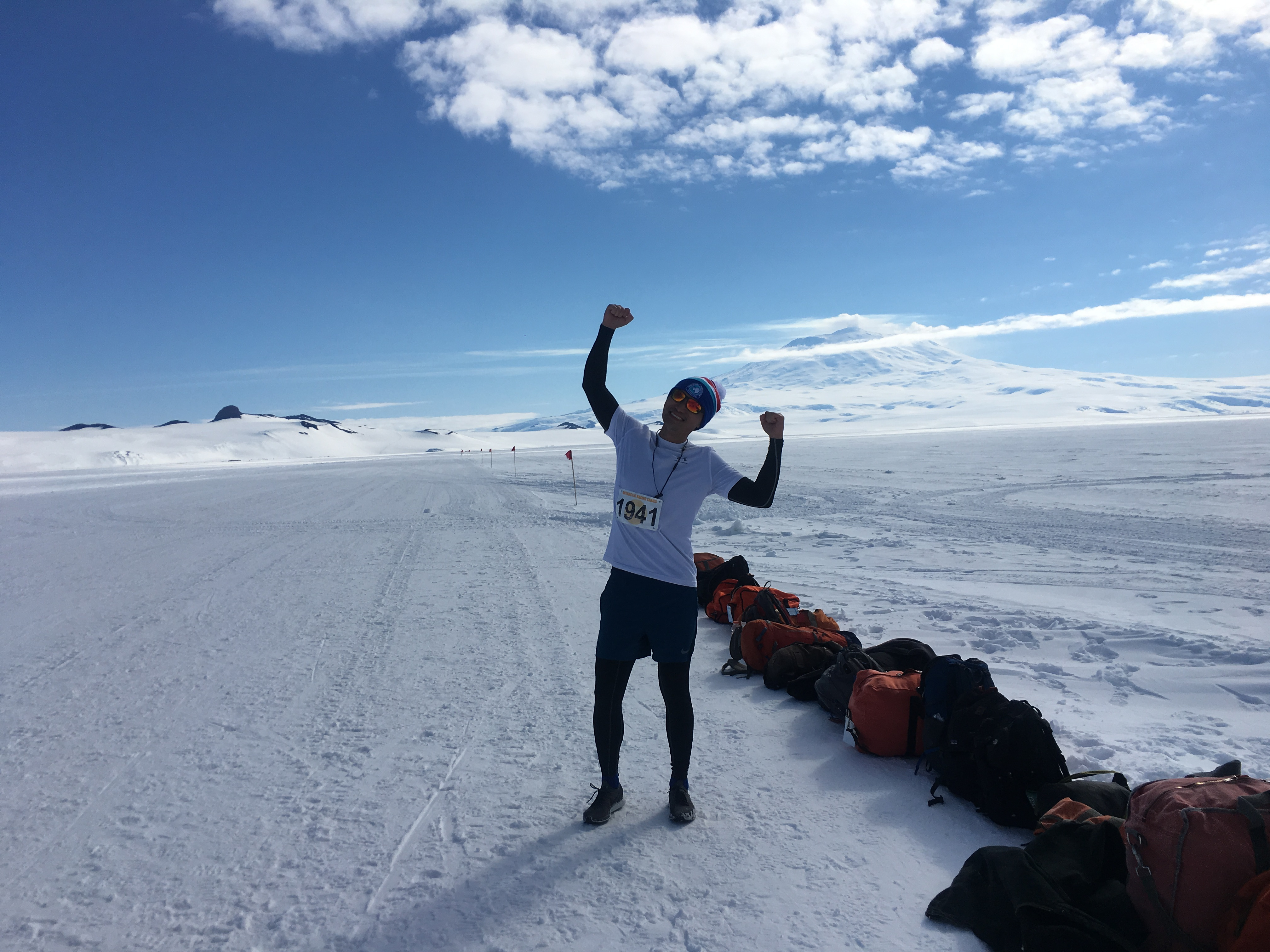
Figure 2. Sheng Fan after completing the McMurdo Station Marathon 2018-2019 on the Ross Ice Shelf, with Mount Erebus in the background.
Decades ago, in the 1950s, a legendary scientist named John Glen introduced a fundamental theory, known today as “Glen Flow Law,” describing how ice deforms under stress. His pioneering experiments laid crucial groundwork, but they were limited by the knowledge and technologies of their era. With climate change intensifying, we realised it was time to revisit and refine these foundational ideas, incorporating seventy years of human insight and experimentation.
Piecing Together the Ice Puzzle
Our project brought together glaciologists, geologists, mathematician, material scientists, and data scientists. We didn’t start fresh; instead, we went on a historical treasure hunt. Our team sifted through decades of past experimental records—some dating back to handwritten notes in ageing journals, others from cutting-edge digital archives. Each set of data was unique, reflecting different methods, experimental conditions, and technologies of their time.
Integrating these diverse studies was no easy feat. We had to carefully calibrate, standardise, and cross-reference results, ensuring we compared like with like. Employing robust statistical techniques, particularly Bayesian inference, we painstakingly merged this historical data into a coherent, comprehensive picture. It was like solving an intricate puzzle with pieces made by different generations, each holding clues vital to the full story.
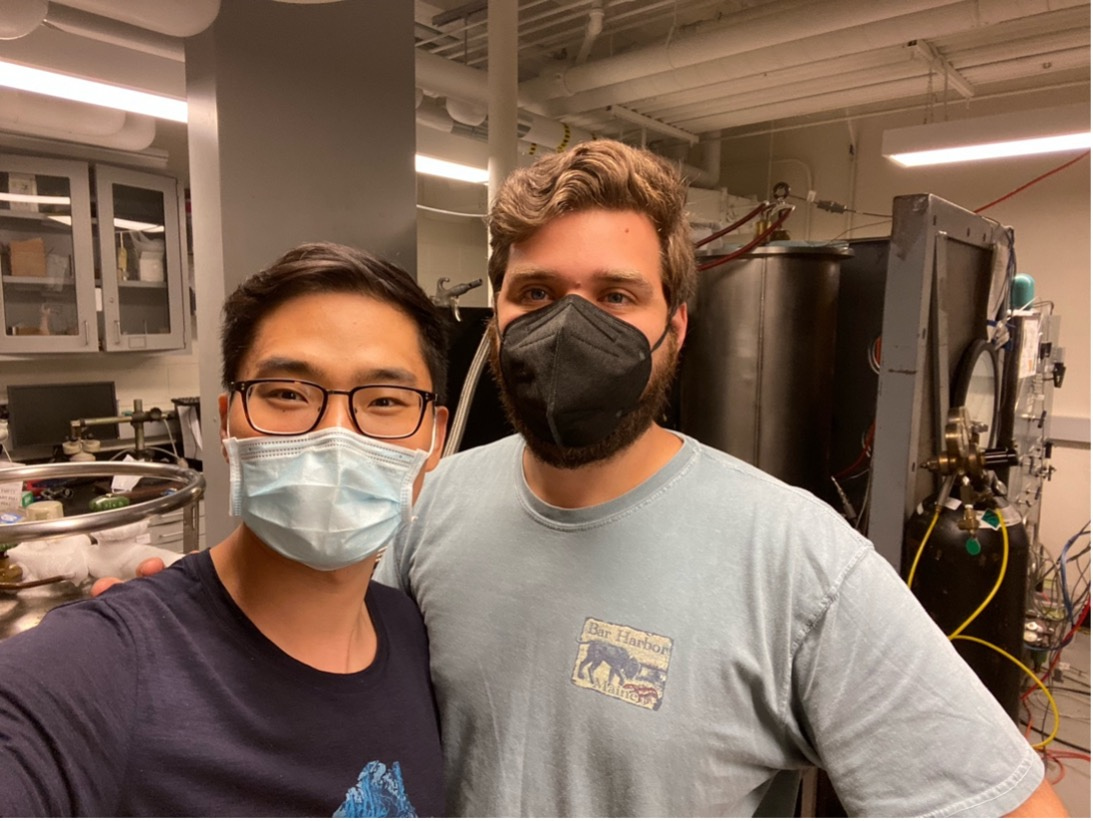
Figure 3. Sheng Fan (left) and Travis Hager (right) at the Ice Physics Lab, University of Pennsylvania, after conducting deformation experiments on ice during the COVID-19 pandemic. Photo by: Sheng Fan
Cool Ice, Hot Properties
What emerged from our extensive analysis was both surprising and exciting. It has long been recognised, notably through the work of David Goldsby and David Kohlstedt, that the mechanical behaviour of ice during deformation involves more than one mechanism. Building upon this foundational concept, our findings propose a refined multi-component approach. We demonstrate that water ice deformation cannot be fully described by a simple, single-term equation such as the Glen Flow Law. Instead, our comprehensive model integrates multiple deformation mechanisms simultaneously, providing a more precise understanding of ice-flow complexity.
Interestingly, although Glen’s groundbreaking study introduced the idea that water ice retains a “memory” influenced by its deformation history, accurately defining and quantifying different flow behaviours across various strain states has only now become achievable—seven decades later. This advancement has been made possible by substantial expansions in experimental data and significant progress in analytical techniques. Our research thoughtfully builds upon the seminal work of many heroes, including John Glen, David Goldsby, David Kohlstedt, Bill Durham, Paul Duval, and Jo Jacka, enriching it further with modern insights gained through state-of-the-art methodologies and extensive data integration.
Movie 1. Microstructural evolution of a deforming thin section from a synthetic water ice sample, captured every 4 minutes using optical microscopy at the University of Mainz. The colour indicates the orientation of ice crystals. Movie by: Sheng Fan and Mark Peternell.
Why Our Discovery Matters
Why should everyone care about these seemingly abstract discoveries? The answer is practical and urgent. Ice-sheet movement profoundly impacts global sea-level rise, directly affecting billions of people worldwide. Improved flow laws mean climate models can better forecast how glaciers and ice sheets might respond as temperatures climb. Such precise predictions are vital for coastal planning, infrastructure development, and safeguarding ecosystems threatened by rising seas. By continuing to refine our understanding of ice flow, especially under more complex natural conditions, we further reduce uncertainties in our climate models. This ongoing research empowers policymakers, communities, and individuals with increasingly reliable information to address the realities of a warming planet. From coastal defence projects to global climate negotiations, accurate and continually improving scientific insights help shape critical decisions about our shared future.
However, our work isn’t finished yet—significant challenges remain, particularly in understanding ice behaviour at very high strains and the complexities introduced by mechanical anisotropy. Current laboratory-derived flow laws, including those developed in our research, represent predominantly isotropic conditions at low strains. Almost all natural ice, however, has an anisotropic microstructure, influenced by prolonged deformation histories and variable environmental conditions. To address these realities, we need further experimental data and advanced microstructural analyses to refine existing models and better represent natural conditions. Continued research and collaboration are essential to effectively inform adaptive strategies, resource allocation, and policy development to mitigate and adapt to the impacts of climate change.
A Human Endeavour: The Bigger Picture
Behind every scientific breakthrough is a human story of collaboration, perseverance, and curiosity. Our research journey wasn’t just about crunching numbers and running experiments—it was about people connecting across time and disciplines. Each dataset represented a chapter in a decades-long narrative written by generations of dedicated scientists. From meticulous early researchers working in post-war laboratories to contemporary data scientists wielding powerful computing tools, every generation contributed crucial knowledge.
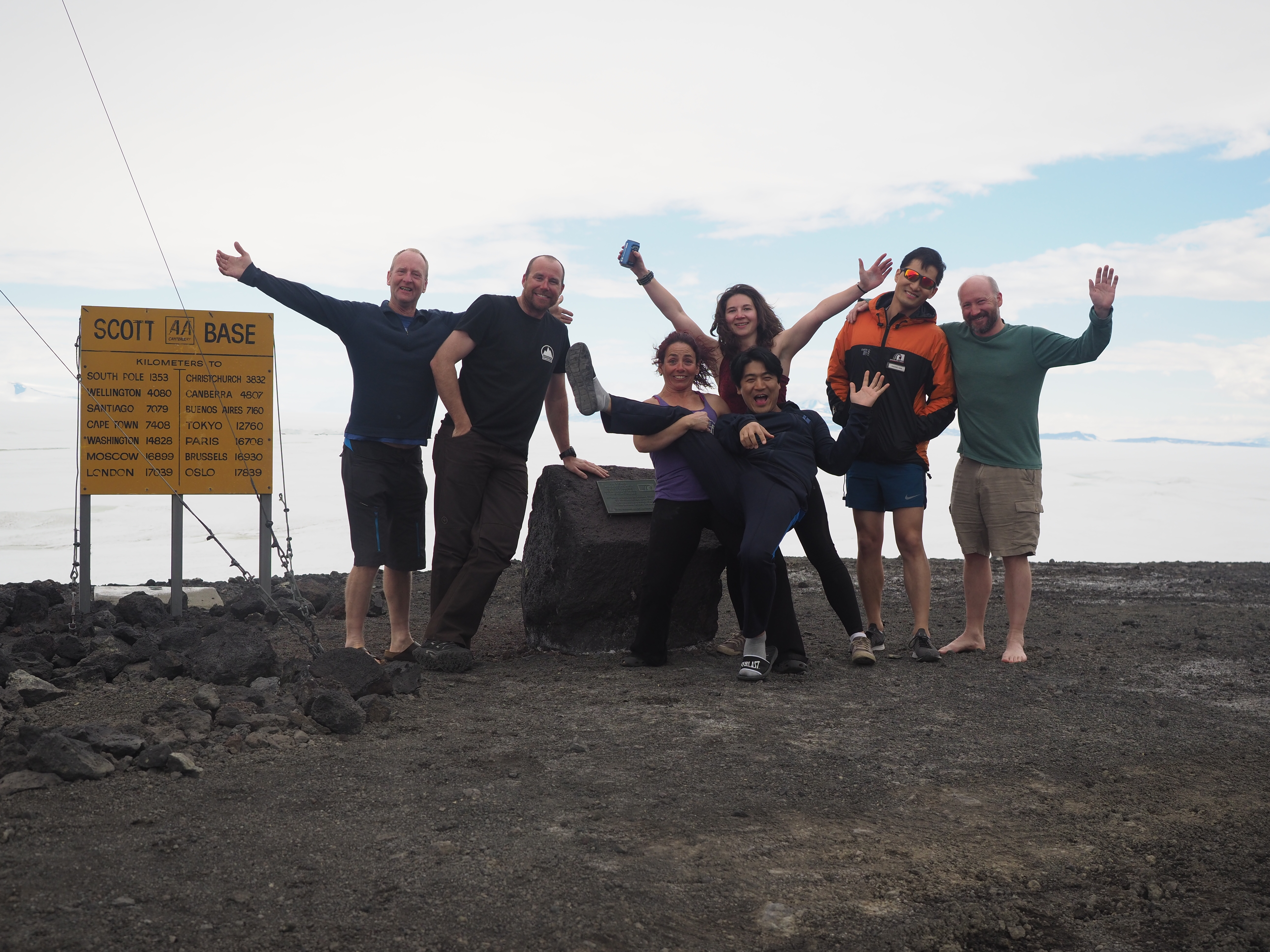
Figure 4. The international research team at Scott Base, Antarctica, comprising members from New Zealand, China, South Korea, and Brazil. From left to right: David Prior (NZ, author of this paper), Richie Hunter (NZ), Bia Boucinhas (Brazil), Lisa Craw (NZ), Daeyeong Kim (South Korea), Sheng Fan (China, author of this paper), and Hamish Bowman (NZ).
The journey was filled with frustrations and triumphs—moments of confusion when data stubbornly refused to align, and excitement when complex patterns suddenly clarified. It was like assembling an enormous, intricate jigsaw puzzle, piece by careful piece, with each moment of doubt eventually replaced by exhilaration as the big picture emerged.
Yet, amid the rigour and discipline of scientific discovery, lies the quiet strength drawn from personal connections and love. For Sheng Fan, this research journey has been inseparable from the unwavering support, warmth, and understanding provided by Dr J. Doong. In the quiet spaces between experiments, in the long nights of troubleshooting code, and in moments of triumph, Dr Doong’s presence has been an enduring source of inspiration and courage.
Science, after all, is a profoundly human endeavour—fuelled not only by curiosity but also by companionship and affection.
With this deep appreciation and heartfelt sincerity, Sheng Fan wishes to ask one very special question: Dr Doong, will you marry me?
Moving Forward with Confidence
Ultimately, our work serves as a powerful reminder that tackling global issues often requires meticulous attention to seemingly small details. Understanding something as subtle as ice deformation isn’t just academic—it can profoundly influence the lives of future generations. With clearer insight into how ice behaves, we stand better prepared to face climate change head-on.
As ice continues its slow, steady flow, so too does science—ever progressing, building upon the wisdom of the past to illuminate our collective future. Our journey into the secrets of ice flow has not only refined our scientific understanding but also demonstrated the power of human curiosity, persistence, and cooperation to unlock nature’s mysteries.
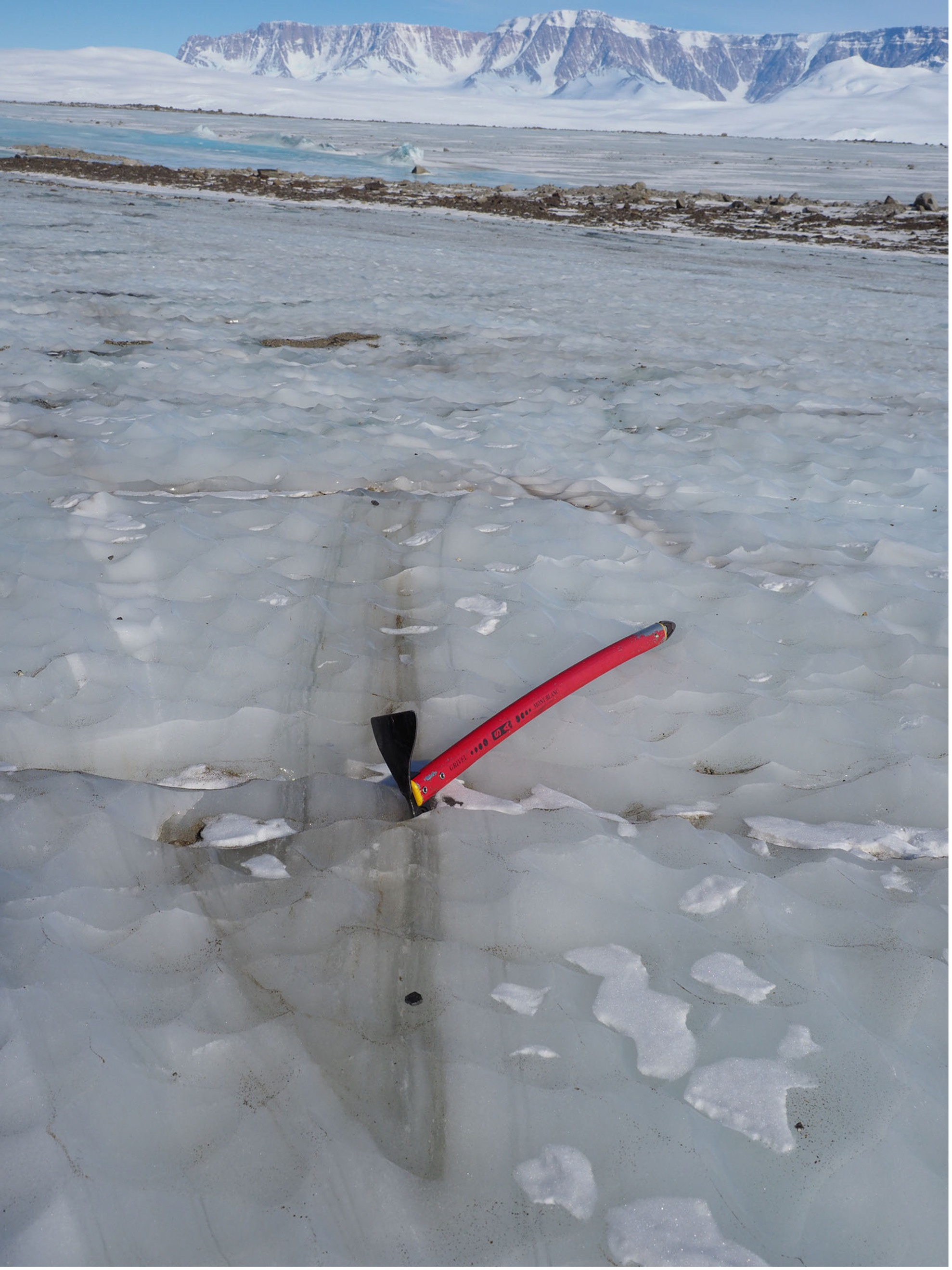
Figure 5. Naturally formed ice layers embedded with debris exposed on the surface of the Priestley Glacier, Antarctica. These layers not only mark geological shear deformation but also symbolise the enduring movement of nature—and of life itself—always forging ahead. Photo by: David Prior
Follow the Topic
-
Nature Geoscience

A monthly multi-disciplinary journal aimed at bringing together top-quality research across the entire spectrum of the Earth Sciences along with relevant work in related areas.
Related Collections
With Collections, you can get published faster and increase your visibility.
Geology of the Moon
Publishing Model: Hybrid
Deadline: Jan 31, 2026
Progress towards the Sustainable Development Goals
Publishing Model: Hybrid
Deadline: Ongoing


Please sign in or register for FREE
If you are a registered user on Research Communities by Springer Nature, please sign in